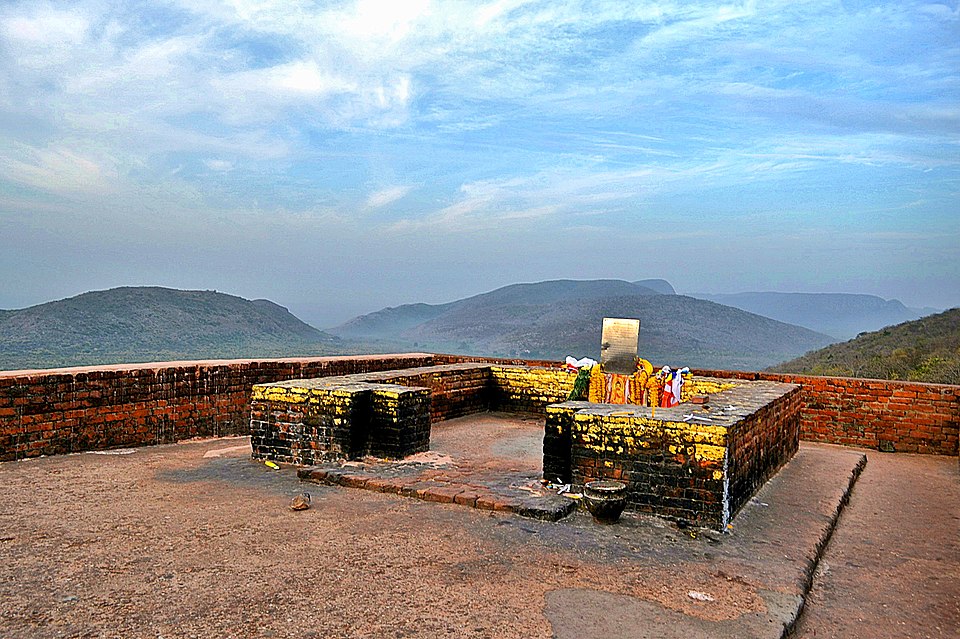RAJAGAHA NUWARA
Sri Lanka’s Ancient Jewel of History and Spirituality
“Ānanda, Rajagahānuvāraṃ ramanīyaṃ, chora-pabbhataṃ ca vebhāra-pabbataṃ ca sapta-parṇī-ghaṭaṃ ca Isigili-pabbataṃ ca kālasilāvaṃ ca sīta-vanassa sapta-sonaḍika-pabbataṃ ca Tapodāramayaṃ ca Vēḷuvanārāmaṃ ca Jīvaka-ambavanaṃ ca Maddakucchi-migadāyaṃ ca ramanīyaṃ.”

Nestled within Sri Lanka’s vibrant landscape, Rajagaha Nuwara—also known simply as Rajagaha—holds an extraordinary legacy that blends the ancient world with the profound wisdom of Buddhism. As the historical capital of the Magadha Kingdom, Rajagaha is not only a place steeped in tradition but also a revered destination for pilgrims and history enthusiasts alike. Today, Rajagaha Nuwara stands as a testament to the island’s rich cultural and spiritual heritage.
During the Buddha’s time, the most powerful of the sixteen great kingdoms was Magadha. The ruler of Magadha was King Bimbisāra, who was an Ariya Sāvaka (noble disciple) and had attained Sotāpanna (stream-entry). The capital of the Magadha Kingdom was Rajagaha, also known as Giribbaja. The initial royal lineage of this kingdom was the Mahāsammata dynasty. Rajagaha (Royal residence) got its name because it was the residence of kings such as Mahāmanta and Govinda. In the present day, Rajagaha is known as Rajgir.
The Buddha first visited Rajagaha during his Vassa (rainy season). After his Enlightenment, he stayed there for several days. Afterward, under the invitation of King Bimbisāra, he traveled to Rajagaha and stayed in a place near a well-established stupa known as Supatthita (the well-placed or properly-established) near the Nuga Ruka (Bodhi tree) for meditation.
King Bimbisāra also offered the first alms offering to the Buddha and performed the first Pūjā at the Veluvana Arāma (Bamboo Grove Monastery).”
Buddhism’s Sacred Roots in Rajagaha
One of the most defining features of Rajagaha Nuwara is its deep connection to Buddhism. The city served as a vibrant hub for the Buddha during his time in Sri Lanka. It was here that the Buddha delivered numerous teachings and sermons, helping spread the light of Buddhist philosophy throughout the region.
Things to Do and See in Rajagaha Nuwara
For those planning a visit to Rajagaha Nuwara, there’s no shortage of activities to explore.
Explore the Ancient Ruins: Walk through the ruins of the Rajagaha Royal Palace, the Brahmin Peak, and other historical sites. These provide insight into the ancient city’s layout and architecture.
Trek to Gijjhakuta Hill: Embark on a hiking adventure to the Gijjhakuta Hill (also known as the “Hill of the Vultures”), where the Buddha meditated. The hill offers spectacular panoramic views of the surrounding countryside and is a perfect spot for meditation and reflection.
Relax in the Hot Springs: Take a break from your historical exploration and unwind in the nearby hot springs. The natural thermal waters offer a therapeutic experience amid nature.
Attend Buddhist Ceremonies: If you’re lucky, you may coincide your visit with local Buddhist ceremonies or festivals, where the locals engage in vibrant religious rituals, prayers, and offerings to the Buddha.
